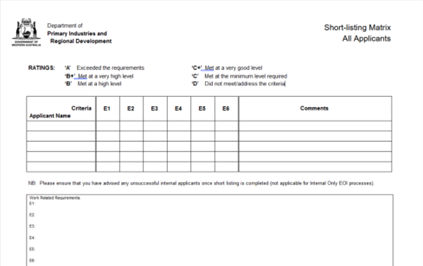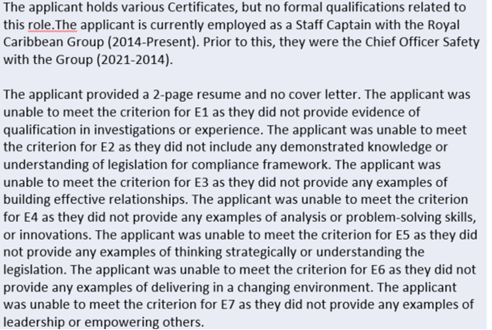Addressing selection criteria
Tips for tertiary students with neurodivergent conditions
Most advertised positions ask candidates to address the selection criteria. Your response can be a separate document or it can form part of your cover letter.
Selection criteria will be listed in the job advertisement or the job description. The “essential criteria” are the minimum requirements needed to perform the advertised role. The “desirable criteria” are things the employer would like to have, but they are not essential. You need to demonstrate to the potential employer that you possess the required experience, knowledge, skills and attributes to meet the essential criteria needed for the role.
Government, educational institutions, the not-for-profit sector and large corporate organisations tend to require applicants to address selection criteria.
It is important to do this well because if you do not demonstrate how you meet the criteria, your application will not progress.
Give yourself enough time to complete the task. Once you have done this a few times, you will be able to adapt previous responses to address the criteria for each position you apply for.
Before you address the selection criteria
- Read the advertisement and role statement carefully and highlight the key words (e.g. creativity or adaptability). This will give you clues as to what the employer is looking for.
- Copy and paste the selection criteria into a document and use this draft to brainstorm ideas.
- Look at your résumé and list the skills you have developed in your work, study and hobbies. For example, if you have worked in a café, you may have developed skills in customer service, conflict management, organisation, working with people and prioritising tasks.
Writing your statement against the selection criteria
- Read each selection criterion carefully and break it down into sections. One section may ask for “experience”, so start by listing what you have done. For example, the selection criterion “customer service experience” can be demonstrated by any job you have had that is customer facing. Emphasise the experience, the diversity of customers and the challenges you overcame, rather than just your job title.
- Use separate headings to clearly address each criterion.
- If a selection criterion relates to multiple skills, address each one separately. For example: “ability to communicate with people from a variety of backgrounds” could be separated into communication, variety of backgrounds and, importantly, your “ability”.
- If the selection criteria specify leadership skills, then provide examples of where you have taken responsibility for projects (either at work or in study) or have been a leader in a community or sporting environment.
- “Communication” is a very general term. What type of communication are they looking for (face to face, online)? How often? With what type of people? How well did you communicate? How do you know?
- Make sure you know how long the application should be. If no page or word limit is given, keep each criterion statement to half an A4 page that is single spaced and in 11 or 12pt font.
How are you assessed against selection criteria?
The selection panel reading your application and résumé will rank how you meet the selection criteria. They can only assess you on what you have provided.
This is an example of a form used to rank candidates for a job.

Here is an example of how a panel might summarise a job application. You will see that the lack of evidence and examples is what let the applicant down. Always include a cover letter with an application, even if you’re not asked for one.

SAO
If you apply for roles in the public sector, you will be required to address selection criteria using “SAO”. This stands for:
S – situation that related to the criteria
A – action you took
O – outcome of the action you took
Interview questions are also frequently structured in this format.
Be concise and to the point. Here is an example for a selection criterion on project management and teamwork:
Situation
As a recent graduate, I have been required to complete multiple diverse projects within a team environment.
Action
Example 1: My role in almost all these projects has been the coordinator, whereby I bring the team together, set the tasks and deadlines, allocate the tasks within the team and follow up on a weekly basis.
Example 2: In a recent project, I was required to work within a small team of three, and to work with a small-business owner to improve their bottom-line deliverables.
Outcome
Example 1: Working as the coordinator of the team, I ensured we were consistently able to meet all project requirements in a timely manner with a high-quality result.
Example 2: Working together, we were able to provide the small-business owner with an acceptable and concise business plan outlining the strategies and targets to improve their profit margin by 10% within two years.
Other resources
- Visit your university careers centre website for more advice on job application documents.
- Complete the Curtin Challenge
 module Getting a Job/Selection Criteria. Please note: this Challenge is only available to Curtin students and staff.
module Getting a Job/Selection Criteria. Please note: this Challenge is only available to Curtin students and staff. - The Neurodiversity Hub
 provides programs and materials to support students with neurodivergent conditions in developing life skills and becoming work ready.
provides programs and materials to support students with neurodivergent conditions in developing life skills and becoming work ready.
Downloads
The above content is available for download as a Word and/or PDF document.

